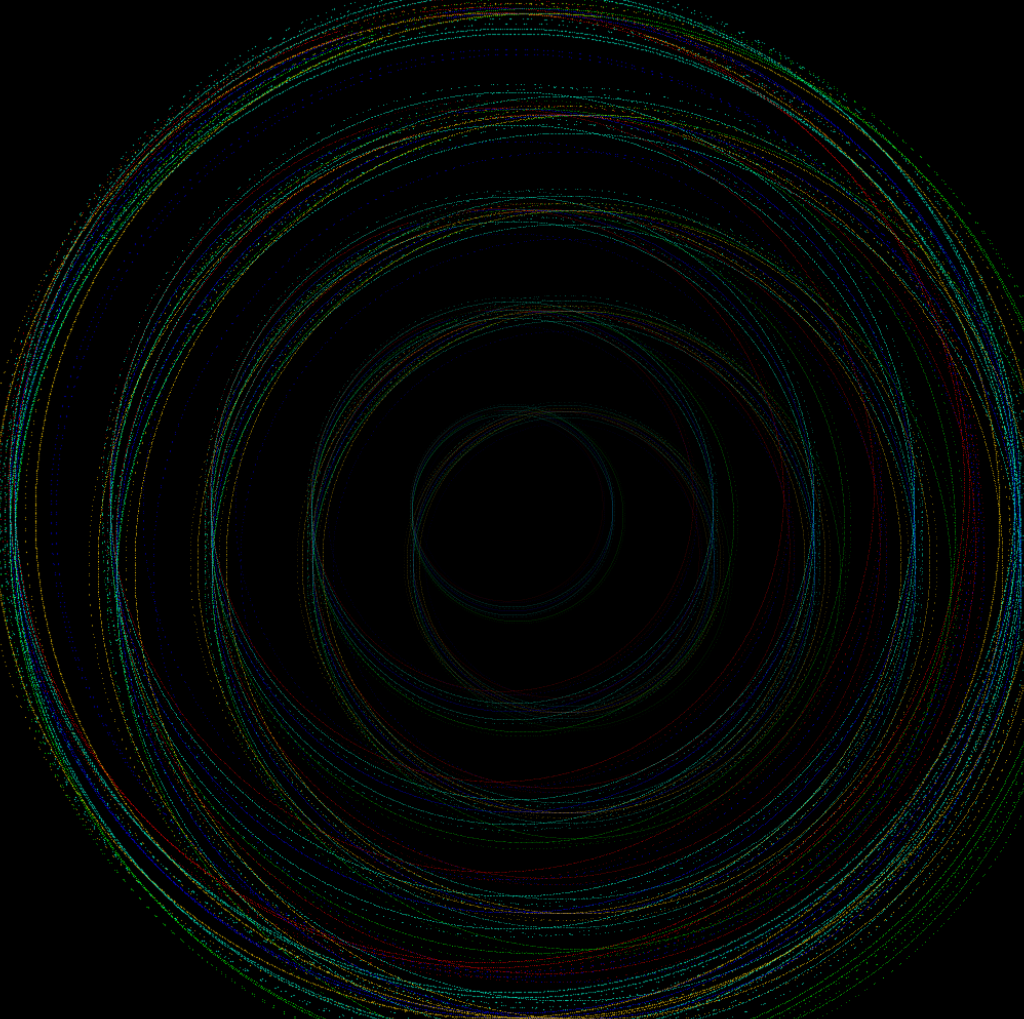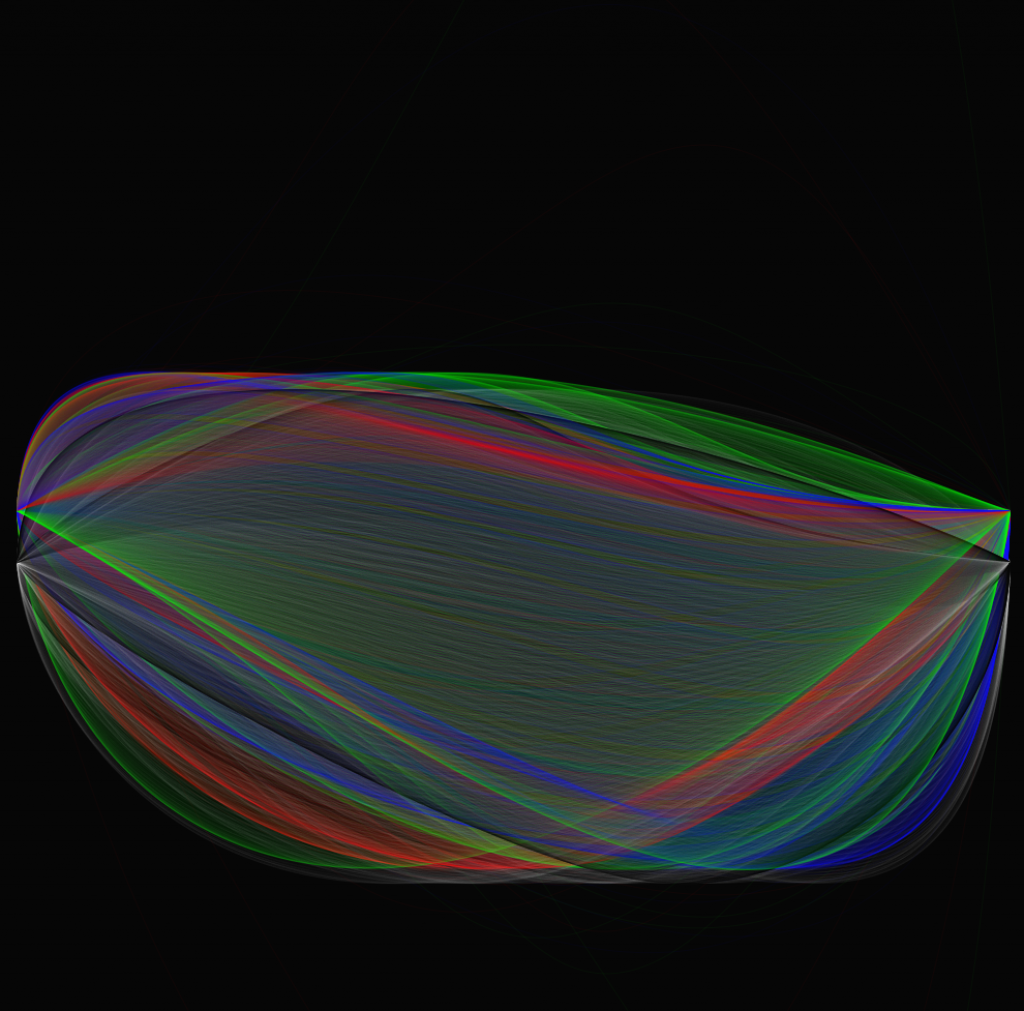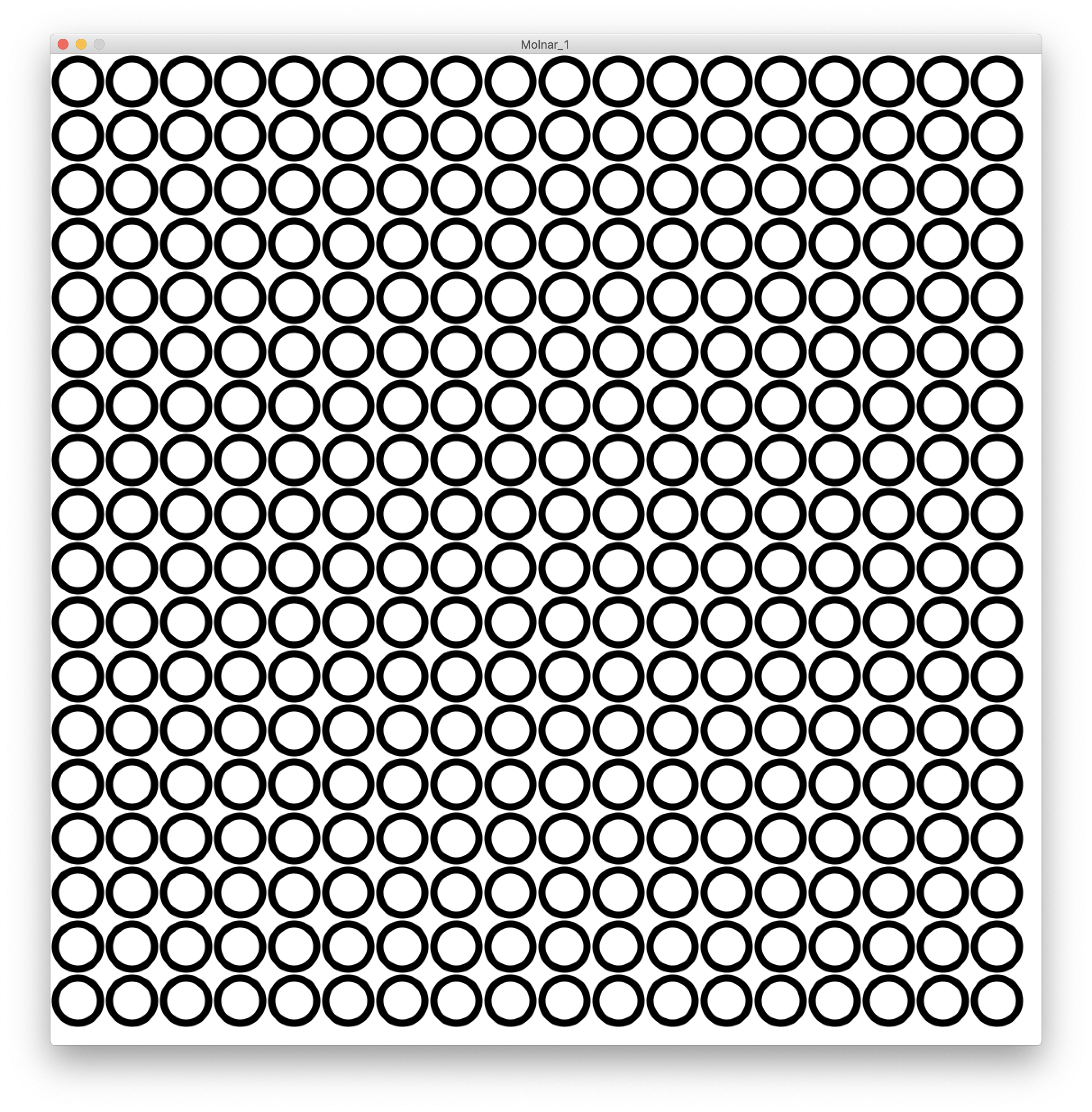Most early computer artist focussed on applied maths and stochastic functions, creating works largely involving formal structures and geometric abstraction. The second wave of artists, following in the footsteps of their predecessors used similar ideas, but added elements of randomness, giving the computer partial control over the creative process. This was revolutionary because it helped establish computer art as more than solely a recreation of artwork from another medium. Computer artwork now included unique characteristics not accessible to artists of other mediums.
After studying art, printing techniques, and sculpture at the Art Institute of Chicago, Grace Hertlein moved on to California State University where, in 1968, she received her bachelors degree of fine arts and, in 1970, her masters of fine arts, both in Sculpture. However, before then, she had already been in an exhibition at the Fall Joint Computer Conference in Last Vegas in 1969. Then, in 1970, now having received her masters, Hertlein was exhibited Data Designs at New York State University, and Computer Graphics 70 at Brunel University. From 1974-1976 she worked as art editor of a magazine titled Computers and People, the successor to Computers and Automation. Then from 1976 to 1982, she was the editor of another magazine, this one titled Computer Graphics and Art, during which time, in 1978, she also became a member of an artistic council founded in Munich. She also remained at the University she herself studied at, working as a Professor at California State University from 1970 until 1998.
Through her teaching, Hertlein began attempting to introduce computer art to IT specialists and artists of other mediums. Although having partial success, she noticed that many IT specialists found her art to be too artistic and not pertaining enough to computer science, and many artists of other mediums found her work to be too confusing and relating to computer science to be considered art.
In addition to writing extensively about computer art and artists, and publishing the engineering journal Computers and Automation, Hertlein was bringing about new waves in the computer art world. She, among many other at the time, looked at, and acknowledged the achievements of people such as Molnár for her use of gradualism, and Nees for his use of formalism. However, Hertlein found the organic, fluid, softer visual styles produced by hands to be missing. She used repetition to achieve disorder and inexactitude. She didn’t want to posses that control which dominated the works of Molnár and Nees, but instead aimed to humanize the computer image and have computer art more closely resemble that which would come from a human hand. She preferred the more playful, experimental pieces. For Hertlein, it was never about control over every detail, or perfection, it was about creativity, experimenting and the art.
Hertlein explains herself by saying, “I am an interdisciplinary person, who might have taught in an English, Art or a Philosophy Department. I was, after all, not a pure scientist – merely an artist with the ability to write and speak, to philosophize.”
She was not interested in any one field, she was an artist. It wasn’t about what skills she had, it was about what she created.
In the 1980s Grace Hertlein began slowing down and practicing computer graphic creation less frequently. She was no longer honing her craft, but instead was becoming aware of other interests of hers, teaching and poetry. In her later years, she was writing philosophical poetry and composing computer music.
Hertlein’s work was later studied and a few generations later, was repeated and again, revolutionized by the first wave of noise and generative programmers.





